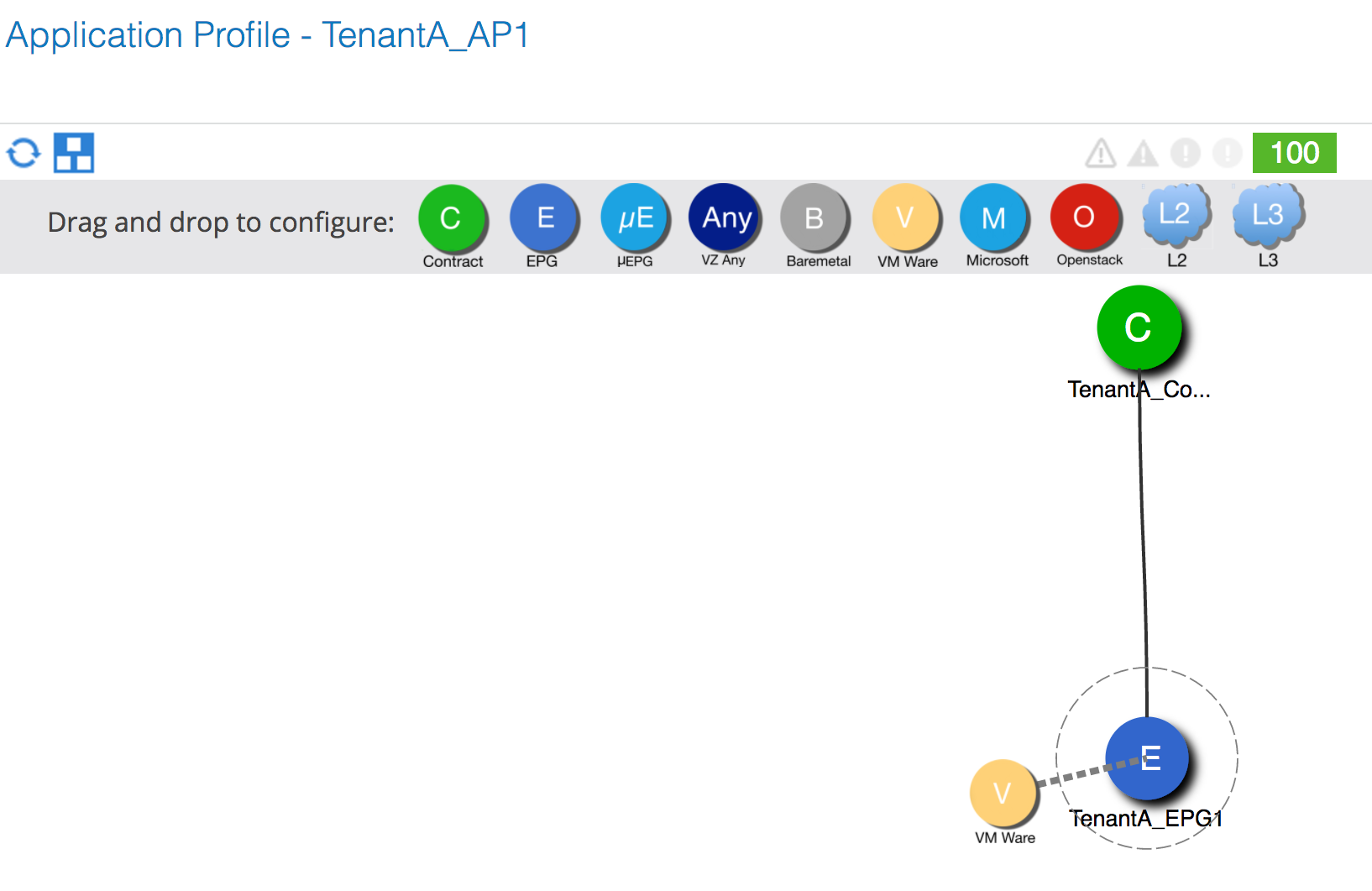We can associate a vCenter domain with a tenant through the drag and drop interface.
- Navigate to the tenant's application profile.

- Drag a
VM Wareobject onto the tenant EPG. You should see a dotted line appear.

- Once you release the mouse button, a new window will appear.

- Click on the
Actionsmenu and selectAdd VMM Domain Association. - In the new window, select the vCenter domain added in the previous recipe.

- Choose the appropriate VLAN mode and encapsulation mode.

Click on SUBMIT.
- The VMM domain will now be associated and appear on the tenant’s application profile.




